Live Science Verdict
Sony’s second attempt at VR is a comfortable evolution of its predecessor. With stunning fidelity, thoughtful haptics and a simple set-up process, immersion is just a few button presses away.
Pros
- +
Headset and controller rumble heighten VR atmosphere and immersion
- +
Very comfortable and adjustable fit
- +
Ultra high-fidelity lenses
Cons
- -
Not compatible with the original PSVR library
- -
The in-box audio solution is not great
- -
You need a PS5 to play it
Why you can trust Live Science
Platforms: PS5
Price: $549.99/£529.99
Resolution: 2000 x 2040 per eye
Field of view: Approx. 110 Degrees
Refresh rate: up to 120Hz
Controllers: PSVR 2 Sense Controllers (included), USB Type-C input, headset feedback, adaptive triggers and eye tracking
Whether you’re an old hand at VR or looking to get into the complicated world of virtual reality, Sony’s much improved second headset, the PlayStation VR2, offers a high-quality, easy-to-use introduction to the medium that maintains all of the immersive fun while removing much of the associated noise. Touting a respectable launch library of some of VR’s greatest hits as well as the promise of more exclusives to come, the PSVR2 is one of the more welcoming headsets on the market.
Delivering incredible 4K 120Hz visuals and thoughtfully tuned and engaging haptic feedback, the PSVR2 sits comfortably among the best VR headsets available to consumers, even if it does come with some important caveats.
PlayStation VR2: Design
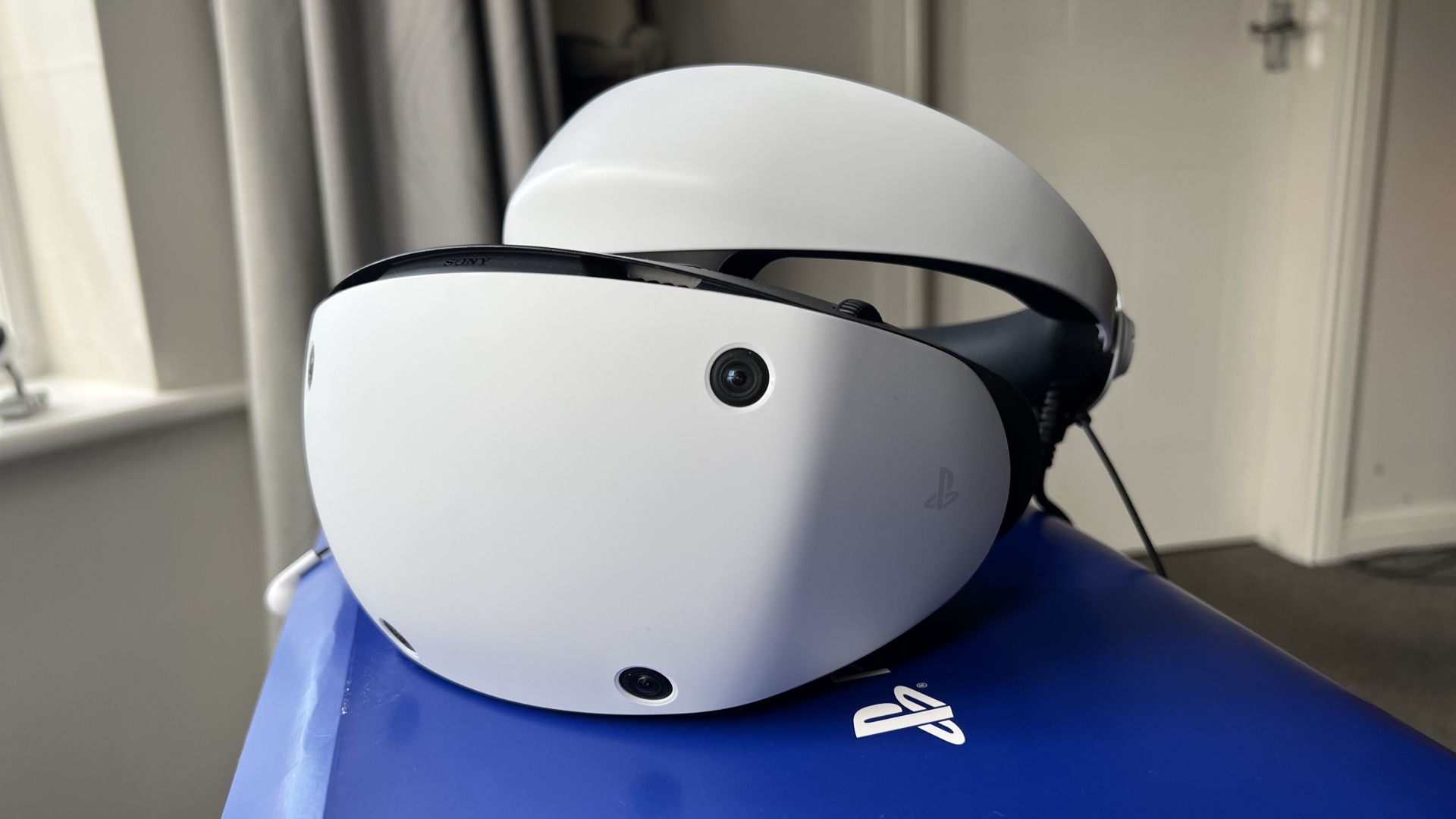
The design of the PlayStation VR 2 is quite the upgrade from its 2016 predecessor. The headset itself is light and easy to transport and features a hard, relatively sturdy outer shell that encases soft cushions covering the front and back of the head. While its appearance may resemble many other headsets you’ve already seen, the PSVR2 sneaks in a valuable set of adjustable settings that, when tinkered with, ensure maximum comfort when playing.
Those with glasses will be relieved to hear that even with my large round frames, there was plenty of room, and no pinching or light leaking from the sides, thanks to the flexible silicon rim connecting the lenses to my face. The rim, in conjunction with a thin, difficult-to-notice ventilation fan, also works to keep the face cool and allows fresh air to move around the headset, keeping fog at bay and making workouts and high-intensity games that little bit easier.
The PSVR2 swaps out the numerous, cumbersome connection boxes and cables of its processor for one simple USB-C input that you plug into the front of the PS5. This means you’ve only got one wire to think about when you’re losing yourself to the rhythm of Rez Infinite.
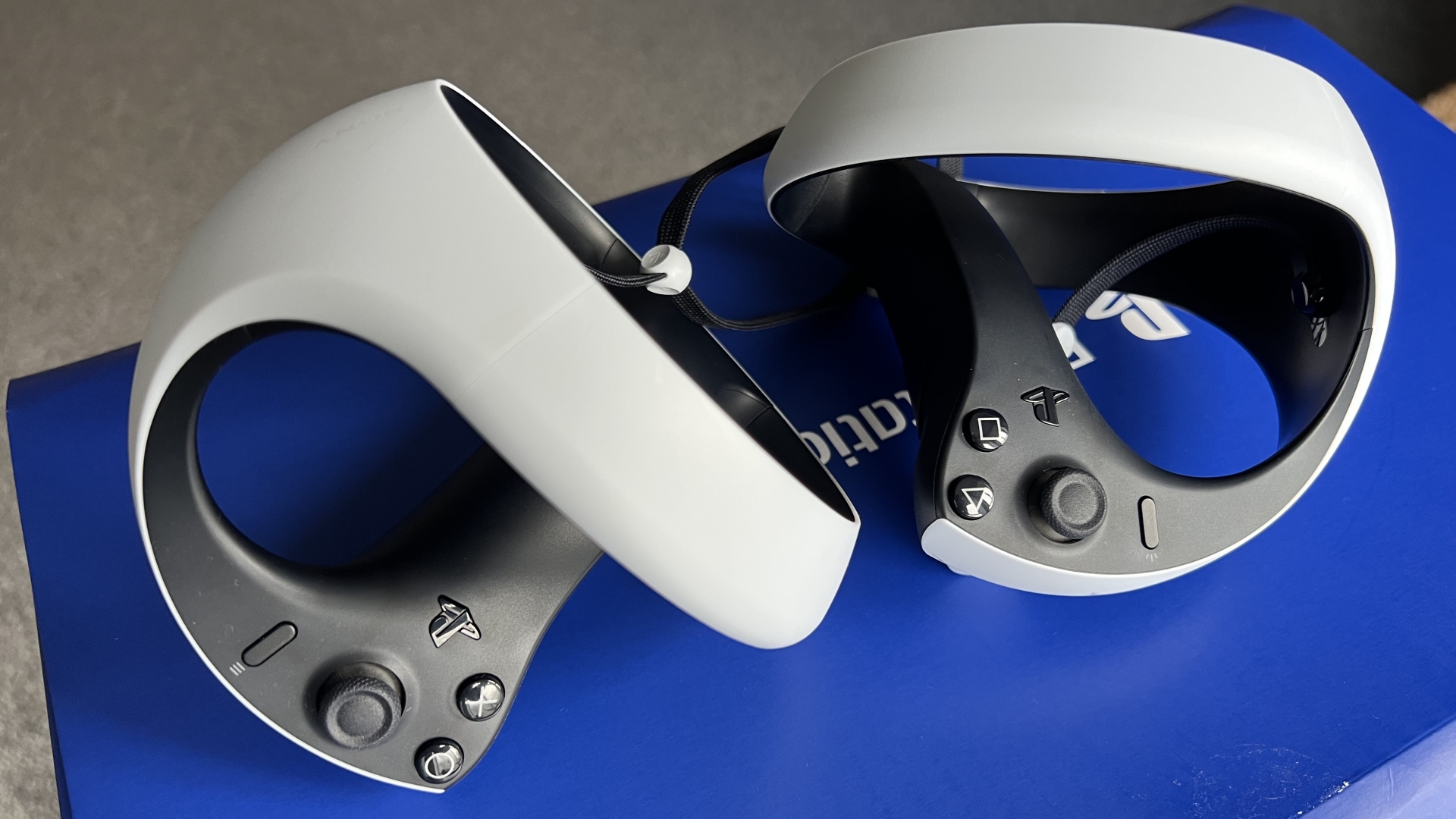
The two Sense Controllers included in the box feature a natural shape to slip your hands into, as well as self-tightening wrist straps, so you don’t end up with a hole in your TV. The controllers' lightweight design allowed for longer play times without much fatigue. Adaptive triggers and finger tracking add to the immersion when messing around in worlds, bringing an imaginary weight to purely-digital items.
The headphones that come with the PSVR are of passable quality and fit in the ear as opposed to over it. While snug and easy to use, they don’t do the 3D immersive audio systems justice. To make the most of in-game audio, I gravitated towards the over-ear Pulse Headset during my playtime, though, this does come at an extra cost of $99.99 in the U.S. and £89.99 in the U.K.
The most compelling part of the PSVR2 design is its lenses. They allow for 4K HDR visuals at up to 120 hz, thanks to the 2000 x 2040 OLED displays in each eye. This blows most other headsets out of the water and, combined with the reliable inside-out tracking, ensures fluidity and fidelity across the board. You may be playing some older games with the PSVR2’s limited library, but you’ll certainly be seeing them at their best.
PlayStation VR2: Setup and usability
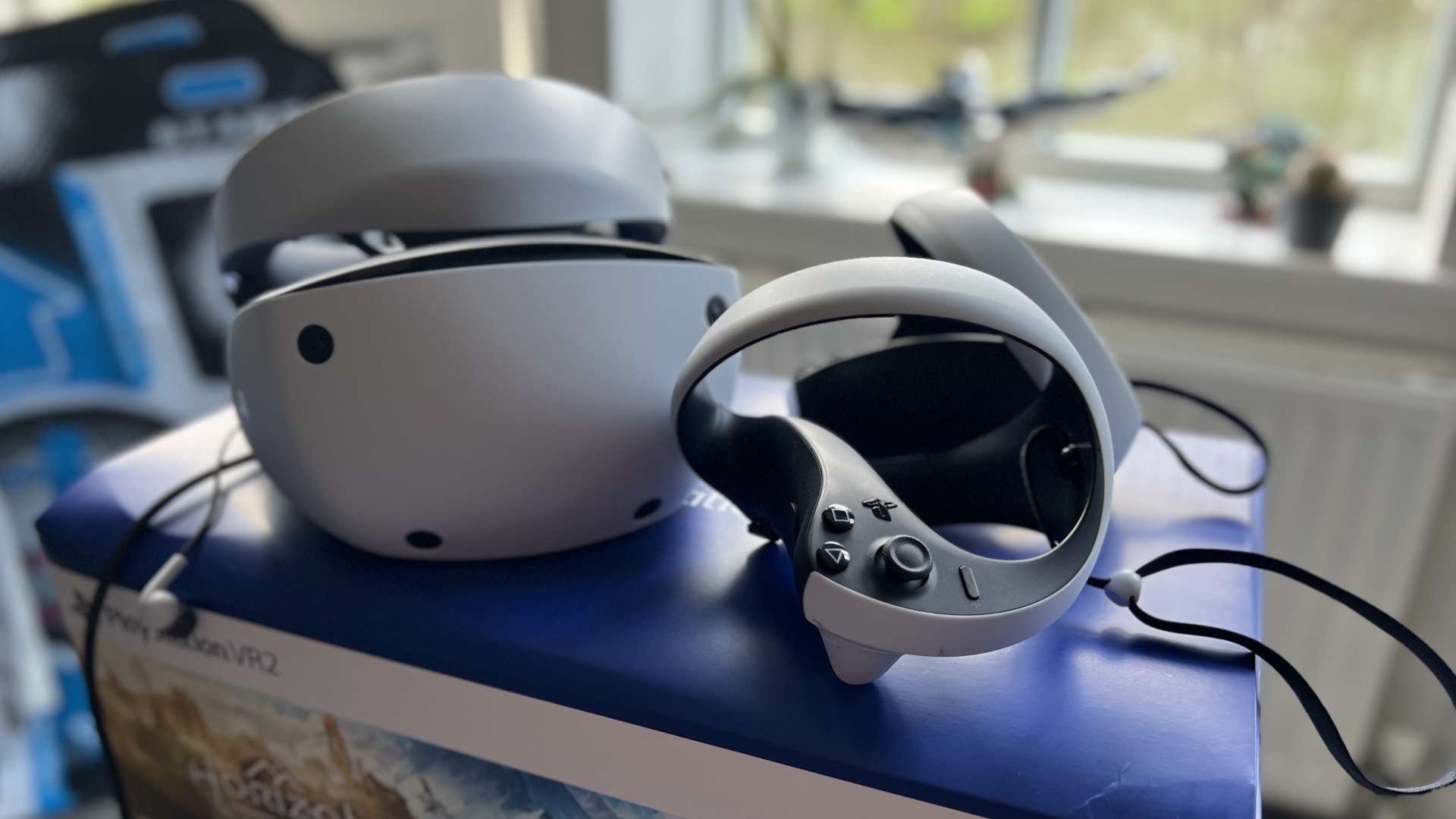
Setting up the PSVR2 is simple, just plug the headset into the USB-C port on the front of your PS5 and turn it on. You’ll then wake up the Sense Controllers and perform a short tutorial, scanning the space and configuring eye tracking to match the positions of your pupils. The whole process takes around 15 manageable minutes, and then you’re quickly thrust into the home screen, ready to play.
To call it plug-and-play is an understatement, and this is extremely refreshing by VR standards — you’re usually fiddling to set up tracking towers and tinkering with your PC’s settings. If you’re new to VR, the PSVR2 is a consumer-friendly delight that won’t cause any headaches on the morning of a birthday.
One thing to bear in mind is that you’ll have to have your PS5 close enough to your room-scale play space, as the cable is long, but not endless. Another thing to consider is that the front-camera tracking requires a good amount of light to function. This means that you’ll likely need to have the lights on if you’re playing late into the evening.
PlayStation VR2: Performance

The smooth 4K visuals and high refresh rate brought the best out of every game I played. Call of the Mountain’s sci-fi worlds were incredibly vibrant, with even the most distant details made discernible, allowing me to embrace its atmosphere. In combat situations, the high fidelity of enemy models and reactive sound design made me flinch and duck as if I was really in danger.
If you happen to jump out of place or need a break after some intense play, a dedicated passthrough button instantaneously brings you back to the real world. The passthrough camera boasts an extremely high refresh rate, so it feels exceptionally true to life — you can easily check your phone or talk to people around you without taking the headset off. This seamless approach applies to navigating the user interface as well. When modifying settings with the PS menu or switching between games, there was little to no interactive friction.
Along with the disappointing earbuds, the main letdown was the battery life of the Sense Controllers. Awe-inspiring games like Tetris Effect and Synth Riders had to come to tragic ends after an hour or two as the batteries ground to a halt. And unless you have the additional Sense Controller Charging Station — $49.99 in the U.S. and £39.99 in the U.K. — or multiple USB cables nearby, charging each controller individually with the lone supplied cable is undoubtedly a pain for those who get caught up in the headset’s visual wonders.
PlayStation VR2: Features, apps & games
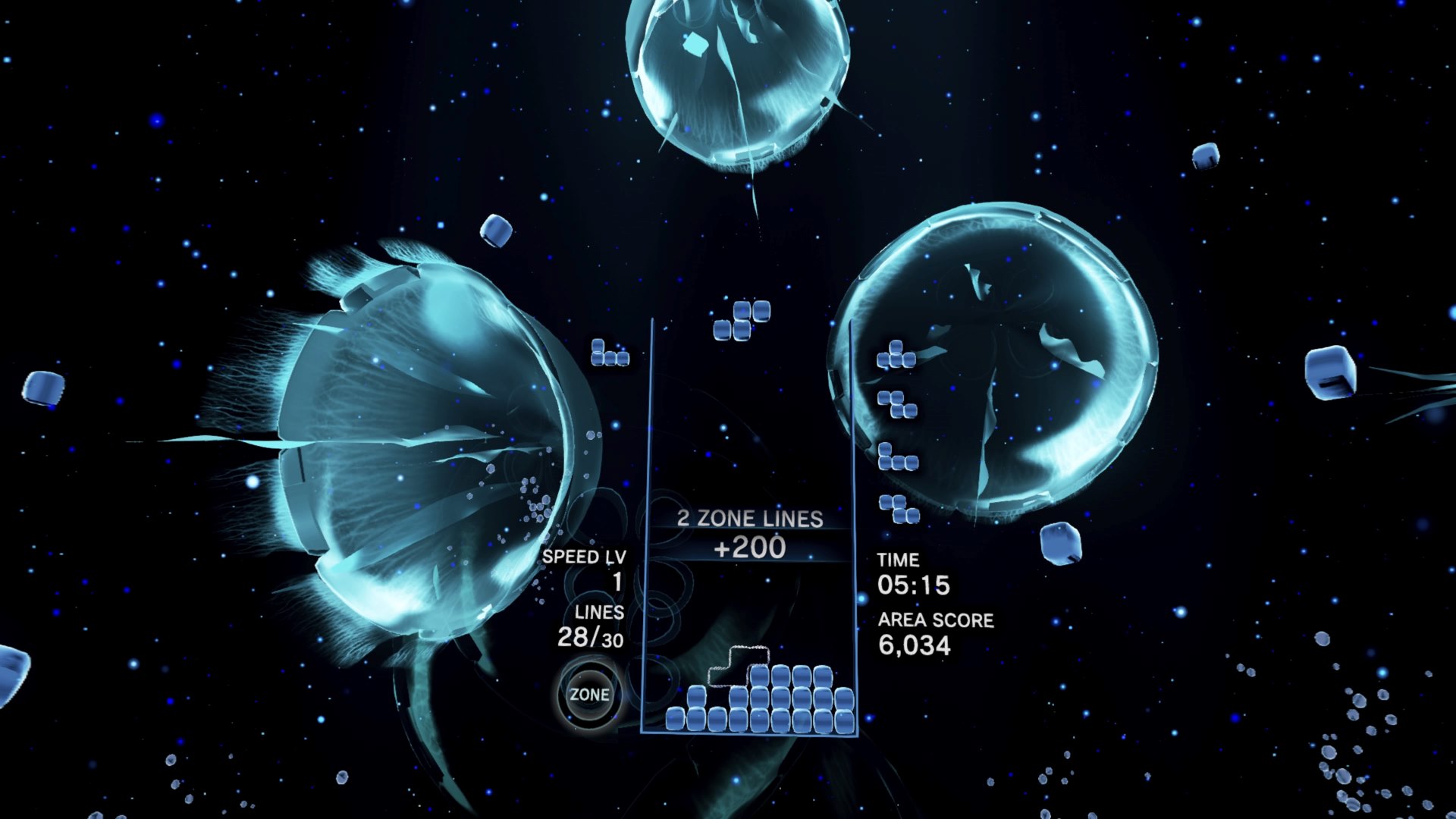
The PSVR2 has a good range of ports of fan-favorite VR titles such as Pistol Whip, Pavlov and Tetris Effect that benefit greatly from its haptic feedback enhancements and high-resolution lenses. It also boasts compelling exclusives like Gran Turismo 7, Horizon Call of the Mountain and Resident Evil Village, with more to come. However, the pool of games is small at the moment, especially compared to Steam or Meta, and missing some titles synonymous with VR such as Beat Saber and VR Chat. There’s also the glaring issue of PSVR1 games not being compatible with PSVR2, beyond the few that have an upgrade path.
As far as VR fitness games go, Kayak: Mirage VR gave my arms a real workout whilst fully immersing me in some of the world's most stunning aquatic environments. Synth Riders is another easy recommendation — an intense rhythm game where you chase the beat with your hands.
On the other end of the spectrum, the PSVR2 also has some charming puzzle games that are great for those looking to relax. Puzzling Places is a stand-out, taking the concept of a 2D jigsaw into the third dimension as you piece together stunning real-world structures around the globe.
Outside of games, Cinematic Mode is a fun feature that allows you to play non-VR games whilst wearing the headset, which may offer a better screen than your TV. It won't be for everyone, but this is a nice touch if you want to immerse yourself fully in a big blockbuster. Since it's more of a gaming-first machine than PC VR options, there aren't many VR experiences on offer when compared to something like the Meta Quest 2 though.
PlayStation VR2: Price
The PSVR2 costs $549.99 in the U.S. and £529.99 in the U.K., and that’s assuming you have a PS5 as well, which is already $499.99 or £479.99 — unless you buy the cheaper, digital edition at $399.99 or £389.99. The cost of just the PSVR2 places it in the middle of the pack price-wise when comparing it to other major headsets, including the cheaper standalone Meta Quest 2 or the more expensive Valve Index, which requires a gaming PC. However, the PSVR2's attractive optional extras, including the Sense Controller Charging Dock and Pulse Headset, will hamper its somewhat competitive price quickly.
A disappointing aspect of the price for owners of the first PSVR is that the PSVR2 is not compatible with the PSVR games, unless the game itself features a free or paid upgrade path. This leaves many good games out for the time being, including Astro Bot Rescue Mission and Blood and Truth.
Should you buy the PlayStation VR2?
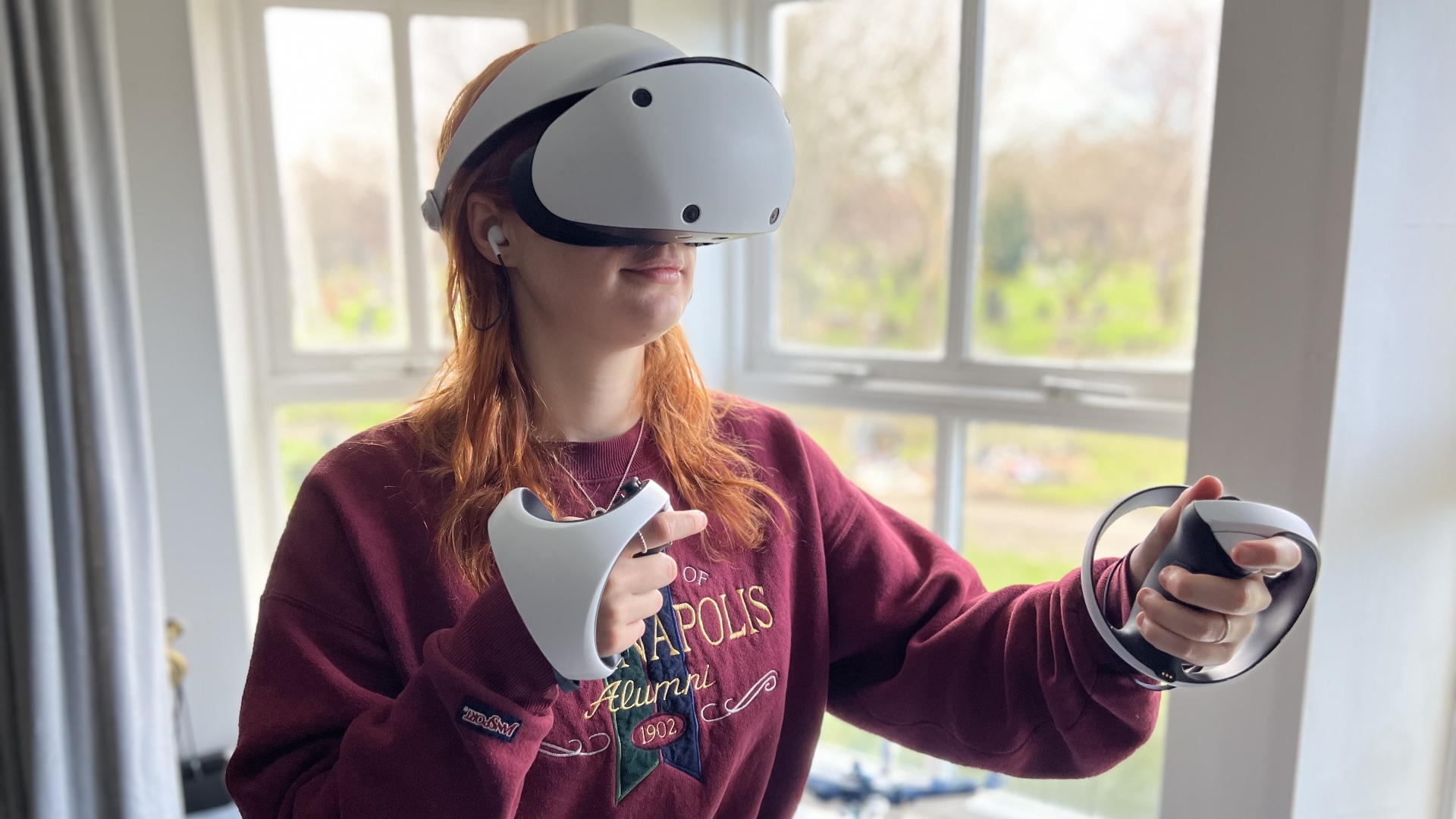
If you are someone who already owns a PS5 and wants to explore VR for the first time, the PSVR2 is a no-brainer if you have the money to spend. The setup is painless, and you can get to exploring almost immediately. The stunning resolution does justice to the small, but exciting catalog of games available, and the addition of headset feedback and eye tracking really does create an experience in VR like no other on the market.
The quality of the lenses, the unique immersive features, and the comfort of the fit make the PSVR2 an incredibly appealing option, especially if you’re already a part of Sony’s ecosystem. Overall, it's the PSVR2’s ease of use that kept me coming back. It's just that much more consumer-friendly than its competitors.
However, if you’re a serious VR enthusiast, a PC-focused setup might serve you better. A wider library of games and creative applications make the PC VR headsets more versatile. At this stage, the PSVR2 does feel like a compelling extension of the console rather than a tool for discovering what all of VR has to offer.
If this product isn’t for you
For newcomers to VR or those who don’t have a PS5, the Meta Quest 2 offers a bustling library and a solid entry-level visual experience starting at a cost of $399.99 or £399.99. The Meta Quest 2 excels thanks to its standalone, portable design and is one of the cheapest headsets on the market.
For VR veterans with gaming PCs who want access to the Steam storefront and the boatload of games that come along with it, the Valve Index for $999 or £919 is a great option. The Knuckles controllers are extremely comfortable and feature individual finger tracking, and the Valve Index comes with powerful integrated audio.

Sarah is an Australian freelance journalist based in the North East of England. Her work has been published on Polygon, Eurogamer, TechRadar and in Wireframe Magazine. She loves to cover the intersections between technology and mindfulness, as well as research video game history and its many oddities. She also has a keen interest in art and how it is being nurtured through the medium of Virtual Reality.











